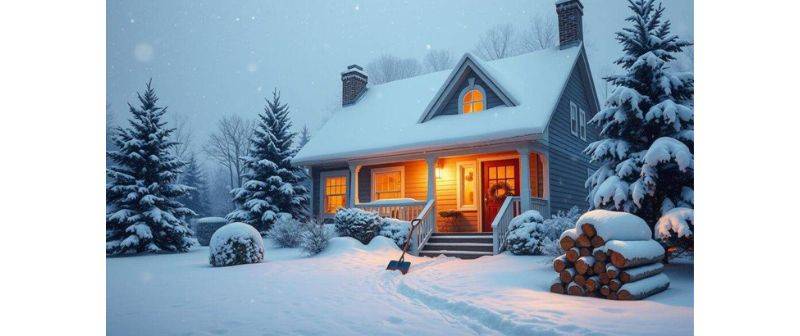Winter is coming, and it’s time to get your home ready. This guide will help you keep your home warm, comfy, and energy-smart all winter long.
Key
- Conduct a thorough pre-winter inspection to identify and address potential problem areas
- Weatherproof windows and doors to maximize heat retention and minimize drafts
- Maintain your HVAC system for optimal efficiency and energy savings
- Evaluate and improve insulation levels to enhance your home’s warmth and comfort
- Protect your plumbing system from freezing to prevent costly damage
- Implement energy-efficient heating strategies to reduce winter utility bills
- Prepare for winter emergencies and safety measures to keep your family secure
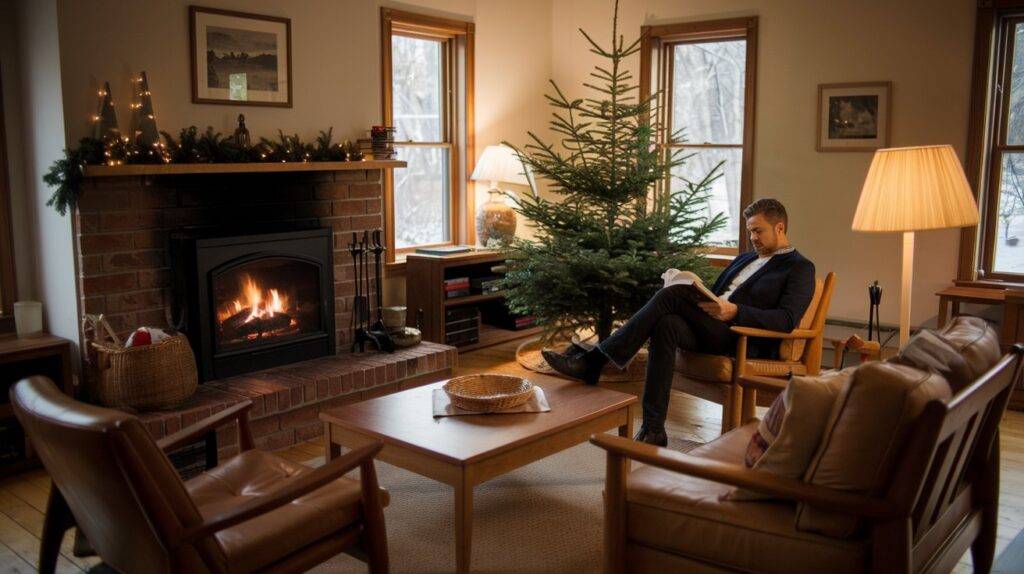
Essential Pre-Winter Home Inspection Checklist
As winter gets closer, it’s key to check your home for any problems. This checklist will help you check the outside and inside of your home. It will get your home ready for winter.
Exterior Inspection Points
First, look at the outside of your home. Check these important areas:
- Roof: Look for missing, damaged, or loose shingles. Make sure gutters and downspouts are clean.
- Siding and Trim: Find any cracks, holes, or gaps. These can let cold air in and warm air out.
- Windows and Doors: Check the seals and weather-stripping. Replace any that are worn or damaged.
- Landscaping: Trim branches, clear gutters, and make sure water drains right. This prevents ice.
Interior Assessment Areas
Now, check the inside of your home. Look at these important parts:
- Insulation: Check the attic, walls, and crawl spaces. Make sure there’s enough insulation.
- Heating System: Get a pro to check and maintain your furnace, boiler, or other heating systems.
- Plumbing: Look for any damage or signs of freezing in pipes, faucets, and water heaters.
- Ventilation: Make sure air flows well. Fix any blockages in vents and registers.
Professional vs. DIY Inspection Guidelines
Doing a DIY home inspection is good for spotting problems. But, some jobs need a pro. If you’re not sure about your home’s systems, get a licensed home inspector. They can give you important info and make sure your home is winter-ready.
“A well-maintained home is the foundation for a cozy and comfortable winter season. Take the time to thoroughly inspect your property and address any concerns before the cold sets in.”
Weatherproofing Windows and Doors for Maximum Heat Retention
As winter gets closer, making sure your home is weatherproofed is key. This helps keep it warm and cuts down on energy bills. Sealing windows and doors well stops drafts and keeps heat in.
Using weatherstripping is a smart move. It creates a tight seal around windows and doors. This blocks cold air from coming in and warm air from going out. It’s easy to put on and really helps your home stay cozy and save energy.
Caulking is also vital for draft prevention. It seals any small gaps around windows and doors with a strong caulk. This stops air from sneaking in and makes your home’s window insulation and door seals better.
For even more protection, think about adding storm windows and doors. They add an extra layer of insulation. This helps your home stay warmer and lose less heat.
- Weatherstrip windows and doors to seal gaps and block drafts
- Caulk around windows and doors to fill cracks and prevent air leaks
- Install storm windows and doors for enhanced insulation and heat retention
“Proper weatherproofing can save you up to 30% on your energy bills during the winter months.”
By using these simple weatherproofing tips, you can keep your home warm and comfy all winter. It’s a small effort for big savings and comfort.
Related Article: Best Hydronic Baseboard Heaters
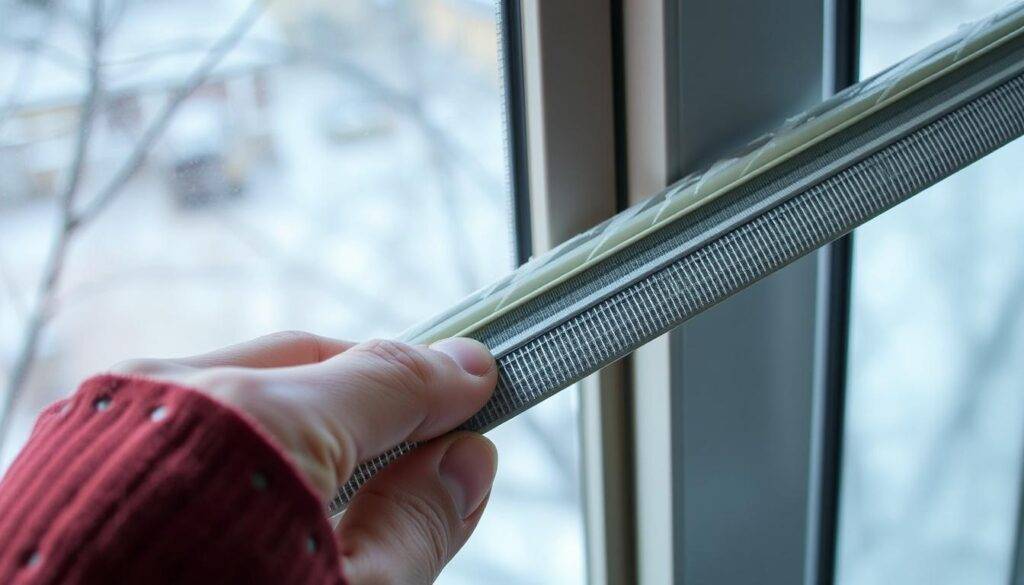
HVAC System Maintenance and Efficiency Optimization
Keeping your HVAC system in top shape is key for cozy winter homes. A few easy steps can make your furnace work better and save you money.
Furnace Maintenance Steps
Regular furnace checks are vital for smooth operation and to avoid sudden failures. Book an annual check-up with a skilled HVAC pro. They’ll clean your system, spot problems, and tweak it for best performance.
Air Filter Replacement Guide
Changing your air filters is a small step with big benefits. Do it every 3-6 months, or as the maker suggests. Clean filters help your furnace run better, saving energy and extending its life.
Thermostat Programming Tips
Smart thermostats can change how you manage your home’s heat and energy. Set your thermostat to adjust automatically with your schedule. This can cut down your heating costs. Try different settings to find the sweet spot between comfort and savings.
| Maintenance Task | Frequency | Benefits |
|---|---|---|
| Furnace Inspection | Annually | Ensures peak performance, identifies potential issues |
| Air Filter Replacement | Every 3-6 months | Improves HVAC efficiency, extends equipment lifespan |
| Thermostat Programming | Ongoing | Reduces energy consumption, optimizes comfort |
By focusing on your HVAC’s upkeep and efficiency, you’ll have a cozy home all winter. And you’ll keep your energy bills low.
Insulation Updates and Improvements for Better Warmth
Keeping your home well-insulated is key to staying warm in winter. Upgrading your insulation can make your home more energy-efficient. This means lower heating bills and a cozier home.
The attic is a prime spot for insulation. It helps keep heat in and cold out. Using blown-in cellulose or fiberglass can greatly improve your attic’s insulation.
Don’t forget about wall insulation. It’s vital for keeping your home warm and energy-efficient. You can use spray foam, fiberglass batts, or rigid foam boards for wall insulation. A pro can help pick the best option for your home.
| Insulation Type | R-Value | Advantages | Disadvantages |
|---|---|---|---|
| Fiberglass Batts | R-13 to R-38 | Affordable, easy installation | Can be prone to air leaks |
| Spray Foam | R-5 to R-7 per inch | Excellent air sealing, high insulation value | Higher cost, requires professional installation |
| Rigid Foam Boards | R-5 to R-7 per inch | Durable, water-resistant, high insulation value | More expensive, can be challenging to install |
Upgrading your insulation and adding other energy-saving steps can make your home warm and efficient. This includes weatherproofing and keeping your HVAC in top shape. Enjoy a cozy and energy-efficient home all winter long.
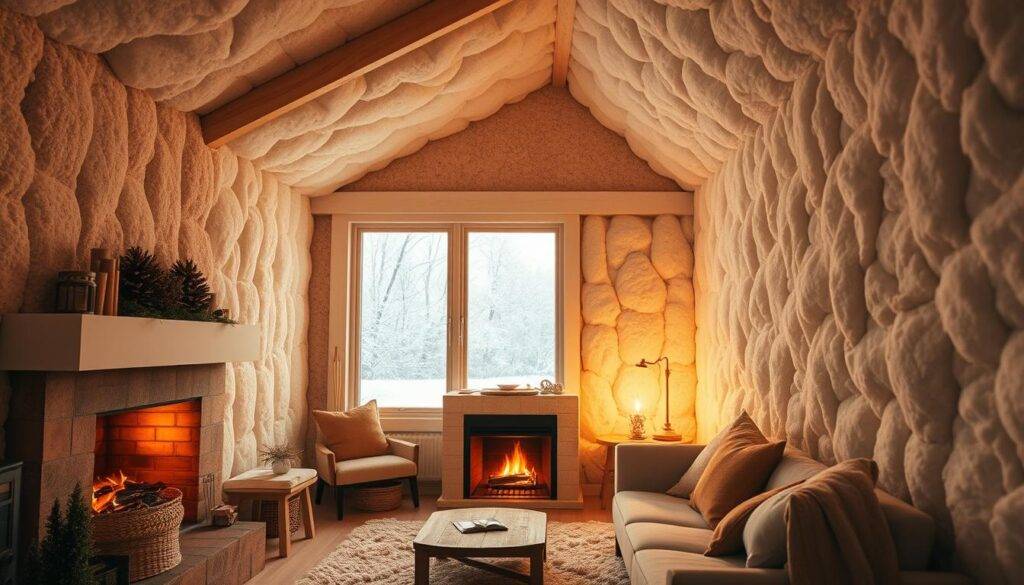
Winter Maintenance Tips to Keep Your Home Cozy
Keeping your home warm and energy-efficient is key during winter. A good winter home care plan includes daily, weekly, and monthly tasks. This helps you stay on top of routine maintenance and preventive measures. It keeps your home in great shape all winter long.
Daily Maintenance Routines
Begin by checking your home’s outside for snow or ice. Clearing paths and ensuring water drains away can prevent dangers. Inside, keep an eye on the temperature and adjust the thermostat to save energy and stay cozy.
Weekly Check-up Schedule
- Look for drafts or leaks around windows and doors. Seal them to keep warmth in.
- Clean your air filters to help your HVAC system work better.
- Check your insulation for weak spots that need more.
Monthly Prevention Tasks
- Get a pro to check your HVAC system for efficiency and longevity.
- Check your plumbing for signs of freezing or problems.
- Look over your energy bills to find ways to use less.
Following this winter home care plan keeps your home warm and well-maintained. It also helps your home last longer and work better.
Protecting Your Plumbing System from Freezing
As winter comes, it’s key to keep your home’s plumbing safe from freezing. Frozen pipes can cause water damage, burst lines, and mess up your day. We’ll share important ways to keep your plumbing safe from winter’s cold.
Pipe Insulation for Freeze Prevention
Insulating your pipes is a top way to stop them from freezing. Wrap pipes in unheated spots like the attic or basement with insulation. Foam or heat tape can help keep your pipes working well.
Draining and Winterizing Outdoor Faucets
Don’t forget to drain and winterize outdoor faucets and irrigation systems. Turn off the water and drain the pipes to avoid freeze prevention and plumbing maintenance issues later.
Emergency Measures for Frozen Pipes
Even with precautions, pipes can still freeze. If this happens, act fast to avoid more damage. Use a space heater or towels soaked in hot water to thaw the ice. If it doesn’t work, call a plumber to fix it safely.

“Taking proactive steps to protect your plumbing from freezing can save you a significant amount of time, money, and stress down the line.”
Follow these winter plumbing tips and stay alert during the cold months. This way, you can keep your home’s plumbing safe and enjoy a cozy winter.
Energy-Efficient Heating Strategies for Winter Comfort
As winter gets colder, keeping warm and saving on energy bills is key for homeowners. New energy-efficient heating tech and smart zone heating help. They make your home cozy and cut down on costs.
Smart Heating Solutions
Smart home technology has changed how we heat our homes. With programmable thermostats, you can control your home’s temperature easily. They work with your HVAC system, letting you adjust settings from anywhere.
Zone Heating Benefits
Zone heating divides your home into areas you can heat separately. This saves energy by heating only the rooms you use. It uses smart tech to let you set temperatures for each area, making your home both warm and efficient.
Winter Maintenance Tips to Protect Your Home
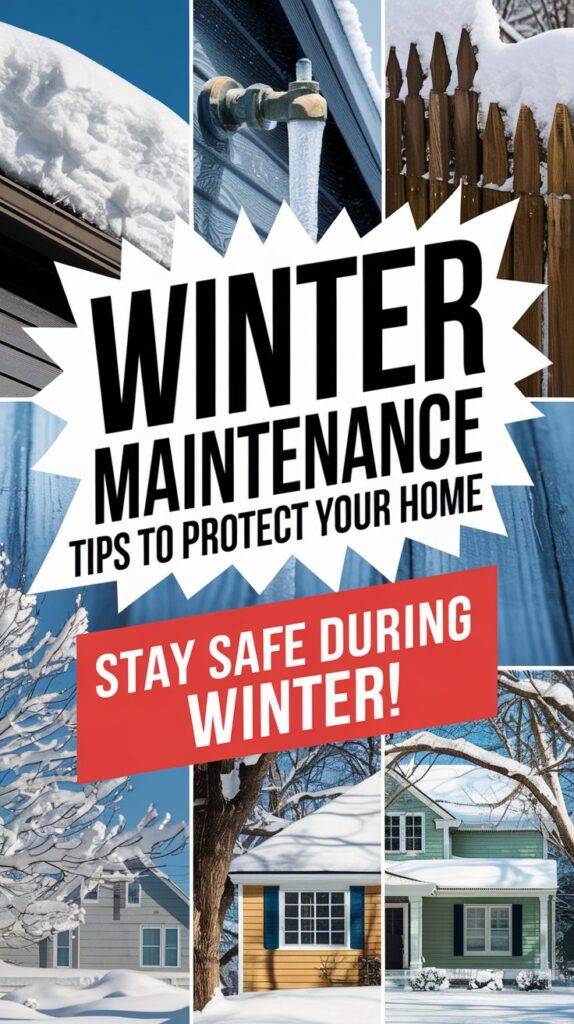
Energy Cost Reduction Methods
There are more ways to cut your heating costs. Keeping your HVAC system in good shape helps it work better. Also, insulating and sealing your home keeps the heat in, saving energy and money.
Using these smart heating methods, you can enjoy a warm winter. You’ll also save on energy bills and make your home more eco-friendly.
Winter Emergency Preparedness and Safety Measures
Preparing for winter emergencies is key to keeping your family safe and comfortable. Start by making a winter emergency kit with must-haves like flashlights, extra batteries, blankets, and a first-aid kit. Also, learn how to protect your home during power outages, such as insulating pipes and having backup heat sources ready.
For winter safety tips, staying informed and alert is crucial. Keep an eye on weather forecasts and follow any local warnings. Wear warm clothes in layers and watch out for signs of frostbite and hypothermia. Also, check on elderly or vulnerable neighbors to make sure they’re okay during the cold weather.
By being proactive in preparing for winter emergencies and focusing on safety, you can ensure your family is ready for any weather. This way, you can face the winter storms confidently, no matter how bad they get.
FAQ
What are some essential pre-winter home inspection points?
Start by checking the roof, gutters, and siding. Also, look at weatherproofing around windows and doors. Inside, check the HVAC system, insulation, and plumbing for any problems.
How can I effectively weatherproof my windows and doors?
To weatherproof, use weather stripping and caulk to seal gaps. Adding storm windows and doors also helps. These steps keep drafts and heat loss at bay.
What HVAC maintenance tasks are crucial for winter?
Keep your furnace in good shape with regular maintenance. Change air filters and set your thermostat right. This ensures your HVAC system works well all winter.
How can I improve my home’s insulation for better warmth?
Check the insulation in your attic, walls, and other key spots. If it’s not enough, upgrade to better materials. Good insulation keeps your home warm and saves energy.
What winter maintenance tasks should I perform routinely?
Make a routine of daily, weekly, and monthly tasks. Clear snow, check weatherproofing, and maintain your HVAC. Regular care prevents big problems later.
How can I protect my plumbing system from freezing?
Wrap exposed pipes in insulation. Drain outdoor faucets and irrigation systems. In extreme cold, run taps to avoid frozen pipes damage.
What are some energy-efficient heating strategies for winter?
Look into smart heating options and zone heating. Also, find ways to lower heating costs. Use a programmable thermostat and natural sunlight to your advantage.
How can I prepare for winter emergencies and stay safe?
Get a winter emergency kit ready. Plan for power outages and learn cold weather safety tips. This keeps your family safe during harsh weather.
- Natural Wood Tables: Rustic & Eco-Friendly Furniture - December 8, 2025
- Enchanting Christmas Garden Designs for a Cozy, Festive Backyard - November 29, 2025
- 35 Best Open Layout Living Room Dining Room Designs - November 29, 2025

